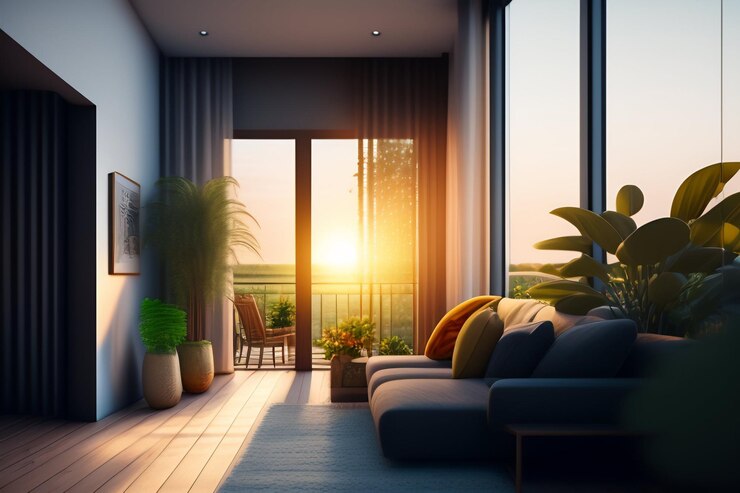Energy efficiency is more than just a trend—it’s a smart investment for homeowners and tenants. With soaring fuel prices and electricity rates, cutting costs with energy-efficient appliances and design is an effective way to reduce routine expenses.
Energy-Efficient Living Space
It can also increase a property’s value and attract more potential buyers or tenants who are interested in sustainability. Most energy efficiency appliances can be covered under a warranty. If you are wondering “what does a home warranty cover?” and “how much does it cost?”, go online and you will find a lot of resourceful information.
Energy-Efficient Appliances
Energy-efficient appliances significantly decrease electricity consumption, allowing you to save money in the long run. These devices also help reduce greenhouse gas emissions and dependence on conventional energy sources.
Look for appliances that display the Energy Star label. These products meet minimum energy efficiency standards and offer other benefits such as programmable settings, energy-saving modes, and remote control options. These features optimize energy usage and allow you to cut your electricity bills by ten or even fifty percent.
Energy-Efficient Lighting
Lighting has a profound impact on mood and can elevate living spaces. By using efficient lighting, you can save energy costs while achieving the aesthetic you desire.
Choosing energy efficient bulbs consumes less power and emits less heat than traditional lights, making them a more sustainable choice. Adding timers and dimmers to your lighting design further reduces electricity usage and costs.
Lighting systems that prioritize energy efficiency are often eligible for rebates and incentives. This can offset initial expenses and help you realize cost savings sooner.
Energy-Efficient HVAC
A high-efficiency HVAC system is one of the best ways to prioritize indoor air quality (IAQ). It’s also a key factor in reducing energy consumption and contributing to a sustainable future.
Modern HVAC systems cycle less frequently, lowering wear and tear and extending their lifespans. Additionally, they often incorporate sound-absorbing materials to minimize noise when operating.
Zoning systems allow homeowners to control the temperature of specific rooms or spaces without wasting energy. They can be installed in new construction projects or retrofitted into existing homes with minimal disruption.
Energy-Efficient Windows
Energy-efficient windows prevent heat loss during winter and air conditioning loss during summer. They also limit UV penetration, protecting interior surfaces from fading and other damage.
This helps homeowners rely less on heating and air conditioning systems, lowering energy consumption. It also reduces greenhouse gas emissions and the need to deplete nonrenewable fossil fuels. Additionally, they keep disruptive noises from lively streets or clamorous neighbors out, promoting better sleep and a more comfortable living space. They also feature tighter seals that minimize leaks, further improving window insulation.
Energy-Efficient Doors
Many homeowners are unaware that their doors are a significant source of heating and cooling energy loss. Old and poorly insulated doors allow cold air to seep in and warm air to escape, causing heating systems to work harder and resulting in higher energy bills.
Energy efficient doors are insulated and designed to seal off gaps, keeping outdoor temperatures out and indoor temperature in. Doors with a high U-Value rating prevent heat from escaping, while those with low SHGC values harvest natural solar energy to keep indoors cool.
Energy-Efficient Roof
An energy-efficient roof is a critical component in creating an eco-friendly living space. It prevents heat gain during the summer and stops heated air from escaping during winter.
Lighter roofing colors reflect sunlight and heat rather than absorb it, while clay and concrete tile roofs excel at thermal emissivity. Additionally, a properly installed radiant barrier minimizes thermal stress on the roof, prolonging its lifespan and reducing cooling costs.
Lastly, proper attic ventilation keeps hot and cold air separate in the attic to regulate temperature and reduce moisture levels.
Energy-Efficient Gutters
Gutters are the silent heroes of energy efficiency. By directing rainwater away from the foundation of buildings, they prevent water damage that could compromise insulation and increase energy consumption.
Preventing Ice Dams
Clogged gutters can cause standing water to freeze at the eaves, which requires additional heating. A well-functioning gutter system, however, can prevent ice dams by directing melting snow to the ground.
Seamless gutters are a great investment for homes that prioritize sustainability. Custom-fitted to a building’s dimensions, they integrate seamlessly with roofing systems and maximize channeling efficiency. They also prevent leaks and require less frequent cleaning.
Energy-Efficient Insulation
Insulation keeps energy bills low by minimizing the need for heating and air conditioning. It is also an effective solution for reducing drafts, uneven temperatures, and excessive noise.
Various types of insulation are available, including fiberglass, cellulose, spray foam, and reflective insulation. The type you choose depends on your needs and the climate in which you live.
Lower energy consumption leads to a smaller environmental footprint and lower greenhouse gas emissions, which contribute to global warming. Additionally, insulation improves the performance of pollution control equipment.
